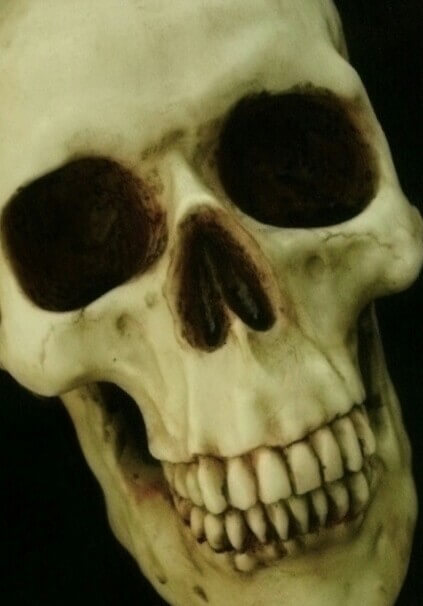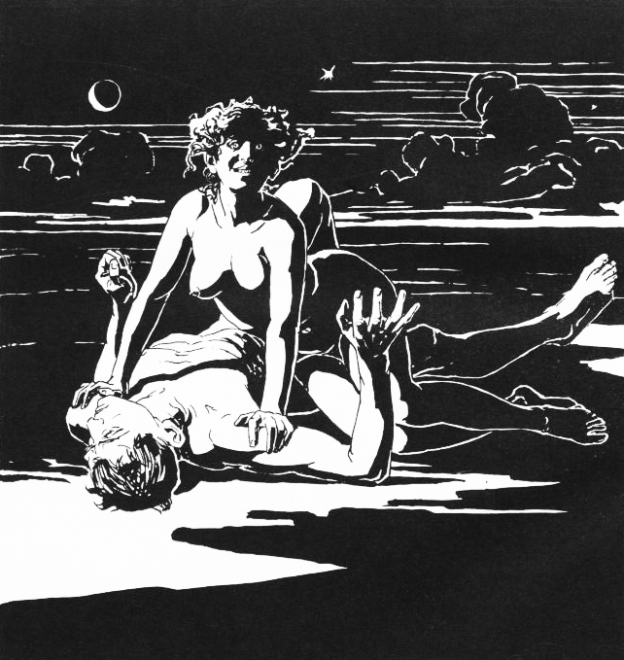Who doesn’t love a great vampire tale? Despite the fact that these supernatural creatures have been recognized for centuries, it seems that over the past 15 years, supernatural themed entertainment has enjoyed a cult-like following, with blockbuster hits like “The Twilight Saga,” “Interview with the Vampire” and “Underworld.” While these may be the go-to favorite vampire movies, especially around Halloween, we can all get our fix throughout the year with the numerous award-winning television shows available. Shows like HBO’s “True Blood” as well as “The Vampire Diaries” and its spin-off series, “The Originals” on the CW Network. Although the first name associated with these night-dwelling, blood-craving creatures was strigoi, for the most part, once the term vampire became popular, ‘strigoi’ fell to the wayside.
In the Beginning…
Strigoi cases are documented as far back as 1672. The Slavic countries experienced a type of ‘vampire hysteria’ in the 1700’s. Reports of people seeing dead relatives walking around and violently attacking the living were in abundance. These reports led to authorities digging up numerous graves to burn and stake corpses. Some regions continue to fear the undead and bury their dead with great caution.
Strigoi Viu – Living Vampires
In addition, strigoi referred to a living person born with a particular type of supernatural power; for example, an individual born with psychic vampirism is destined to return as an undead strigoi following his or her death. Many times, this individual is born with a small tail or with a portion of its birth membrane remaining on the head. This remaining membrane is referred to as a ‘caul’ and is a rarity as it occurs in fewer than 1 of 80,000 births. Additionally, individuals who are born with a ‘sign,’ such as a baby with red hair, a birth defect or same-sex babies born time after time within the same family (seven sons or seven daughters in a row) were referred to as strigoi viu (living vampires) and were considered cursed. These poor souls were doomed to become strigoi mort (undead vampires) upon death; hence, when a known living vampire passed away, the family destroyed the body to make sure it could not rise again.
Other Scenarios That May Lead to Becoming a Strigoi After Death
An unfinished or troubled life could lead to an afterlife as a strigoi. For instance, an individual who was born out of wedlock was destined to return following his or her death as a strigoi. Other scenarios included dying from an unnatural death, suicide or prior to baptism.
The ‘Life’ of the Undead Strigoi
The goal of these creatures is to create chaos. Typically, the undead in Central and Eastern Europe initially preyed on family members. Depending on the tale, the vampire returned to his or her former home in an invisible state to create chaos and consume the food in the family’s pantry. This type of strigoi resembles a modern-day poltergeist. Vampires who died prior to marrying were said to return to the homes of former lovers in an attempt to seduce them.
The vampire may return to the household looking just as he or she did while still living. It might even engage in conversations, perform its routine chores as if he or she never died; however, more often than not, this visit involves the death of farm animals or family members.
Additionally, Romanians blamed the strigoi for diseases, droughts, flooding and famine.
Romanian Characteristics of the Strigoi
Shape-Shifting Strigoi
Romanian folklore states that the majority of these creatures had indigo eyes, crimson hair and two hearts; however, recognizing a strigoi was difficult because it usually shifted into another entity (dog, cat or sheep, etc.). It is said that the second heart is the heart where its vitality resides. This is the heart that spurts blood as a stake drives through it.
Some folklorists speak of male vampires shifting into handsome men and visiting villages during the night to mingle with the young women at social gatherings. Some of these tales involve one naïve girl becoming the victim; whereas, others involve numerous victims with only one girl escaping and surviving the chaos.
‘The Count’ From Sesame Street May Be Based on This European Folklore
Eastern European folklore states that vampires are obsessive creatures; therefore, scattering seeds on the ground outside the home or on top of its grave can keep it occupied because vampires are compelled to count the seeds. Hiding a nail among the seeds was suggested because the nail pricks the vampire as it counts; thus, the seeds are dropped and the vampire must start over. The hope was that the vampire would be up all night counting the seeds, leaving no time to find its victim.
Consuming Victims
There are various ways that the strigoi drinks the blood of its victims. Some say it drinks directly from the heart or consumes the heart itself. In other accounts it is said to devour the energy or the souls of its victims by sucking the souls up through its victims’ noses or mouths.
Destroying an Undead Vampire
There are several ways to successfully destroy an undead strigoi:
- The usual, driving a stake through the heart.
- Burning the body in its entirety.
- Removing its head.
- Cutting the heart out and setting it on fire to burn (if two hearts do exist, both must be burned).
Seven Years Sets an Undead Strigoi Free
Some believed that if an undead vampire was able to keep from being destroyed within the first seven years following his or her burial, then it would be able to dwell in graves other than its own and pass as a mortal human. Additionally, this strigoi no longer needs to prey upon humans and, as time passes, even animals. Once a Serbian vampire reaches this point, it would travel to another region where no one would recognize it. The creature could then marry and have offspring; however, Friday night through Sunday morning of each week, the creature would need to rest within a grave at a nearby cemetery or meet with other local vampires to partake in supernatural social activities. All offspring of these vampires were considered living vampires, these children were cursed to become an undead vampire at the time of their death.
Preventing a Loved One from Returning as a Strigoi
Some buried a bottle full of whiskey with their dead to ensure he or she would not return. Others destroyed bodies prior to their burial. Nonetheless, if a family believed that their deceased loved one returned, they may exhume the body to destroy it or drive stakes through its heart.
Bram Stoker’s Best-Selling Novel, “Dracula” – 1897
The vampire scare spread like wildfire throughout Western Europe, this led to numerous vampire paintings, poems and academic speculations about the creatures. In turn, these works inspired Irishman Bram Stoker to write his best-selling novel (turned movie), “Dracula.”
Vampire Legends
The Legend of Jure Grando of Istria – 1656
Jure Grando passed away in 1656, but continued to terrorize his village for more than 15 years thereafter. When the village priest had finally had enough, they exhumed Grando’s body. Legend states that Grando looked as if he had never died; furthermore, he screamed as they cut off his head.
Serbian Peasant Peter Blagojevich – 1725
Following his death in 1725, Peter Blagojevich is said to have returned to his home: He began haunting his son and made demands for food; however, his son refused. It is said that the son was brutally murdered by his undead father.
Mysterious Deaths of Peasant Children – 1909
According to the author of “An Authenticated Vampire Story” Franz Hartmann, peasant children began to die for unknown reasons at a Carpathian Mountain village. Villagers suspected that a deceased count had returned as a vampire and was dwelling within his old castle. In order to put an end to the deaths, the frightened villagers decided to burn the castle.
Recent Vampire Legends
C?p??âneni – 1969
Radu Florescu authored, “In Search of Dracula, The History of Dracula and Vampires.” Florescu writes of an event that occurred in C?p??âneni. Following the passing of an elderly man, his family members started dying under suspicious circumstances. When the man’s body was exhumed, the corpse showed no signs of decay. His twisted, red face and wide open eyes surely sent a chill up the gravediggers’ spine. As a means to save the poor man’s soul, they burned his corpse.
Bucharest – 1970
Numerous hideous attacks took place in Bucharest, oddly, these attacks occurred at the stroke of midnight and during rainstorms. Victims were typically waitresses who were headed home after completing their shifts.
In 1971, a man named Ion Rîmaru was identified through the teeth marks left on the victims; therefore, he was arrested. Throughout his daytime trial, he was lethargic: For this reason, his interrogations were conducted at night. Rîmaru received a death sentence. When he received his sentence, he became violent and several police officers were required to restrain him.
Rîmaru’s Father Dies
Following the execution of his son, an accident claimed the life of Rîmaru’s father. While investigating this mysterious accident, authorities find that the dead father’s fingerprints are identical to the fingerprints of an unknown serial killer from 1944. The crimes of this serial killer were comparable to those committed by Ion Rîmaru. Rumors spread stating that the ‘accident’ was actually orchestrated by the Securitate.
Romanian Revolution – 1989
On Christmas Day, Romanian dictator Nicolae Ceau?escu and his wife were executed. Because Nicolae Ceau?escu’s corpse was not given what was considered an appropriate burial, superstitious Romanians felt threatened by his ghost. It is said that Gelu Voican (a noted revolutionary) carpeted the Conduc?tor’s apartment with garlic braids, as garlic is another way to prevent a visit from the strigoi.
Marotinu de Sus – 2003
Prior to Christmas day, a Romanian man by the name of Petre Toma passed away. Toma was 76-years-old. Then, several months later (Feb. 2004), Toma’s niece states that she was visited by Toma. This sighting causes her brother-in-law (Gheorghe Marinescu) to gather a group of individuals together to hunt vampires.
Vampire Hunters Dig Up Petre Toma’s Remains
To accomplish the task at hand, the group decided to consume some alcohol before heading out to the cemetery to dig up the remains of Toma. Once the group dug up Toma’s corpse, an incision was made in the chest and the heart was ripped from the body. Following the removal of Toma’s heart, the corpse was burned. As is customary, these ashes were mixed with water and then consumed by Toma’s family members.
The Romanian Government Chimes-In
The Romanian government had previously banned this practice; therefore, the six people responsible for exhuming Toma’s body were arrested for disturbing the peace of the dead. The government imprisoned all six of the offenders; in addition, they were ordered to pay damages to Toma’s family members. Due to this incident, villagers in Am?r??tii de Sus take preventative measures with their dead by driving a stake through their bellies or hearts.
The majority of the vampires we see in the movies and television shows of today are interesting, seductive and love-seeking creatures. Chances are, we will all fall for one of those bigger than life vampires up there on the silver screen: Just remember to wear a scarf!
Sources:
- https://en.wikipedia.org/wiki/Jure_Grando
- http://www.animalplanet.com/tv-shows/lost-tapes/creatures/strigoi/
- http://science.howstuffworks.com/science-vs-myth/strange-creatures/vampire3.htm
- http://www.camelathompson.com/blog/the-romanian-legend-of-the-strigoi
- https://en.wikipedia.org/wiki/The_Originals_%28TV_series%29
- https://en.wikipedia.org/wiki/The_Vampire_Diaries
- https://en.wikipedia.org/wiki/True_Blood
- http://www.khou.com/story/news/local/2014/07/10/11157526/
- http://www.tvworthwatching.com/post/The-Vampire-Diaries-Adjusts-to-Life-after-Nina-Dobrev-on-a-Wing-and-a-Prayer.aspx
- http://www.enstarz.com/articles/41412/20140715/the-originals-season-2-news-cw-series-scores-book-deal-with-harlequin-stories-released-during-shows-new-episodes-video.htm
- http://www.clontarf-online.com/bram_stoker.htm
- http://www.encyclopaedia.com/ebooks/12/62.pdf
- https://en.wikipedia.org/wiki/Radu_Florescu
- https://en.wikipedia.org/wiki/Caul


